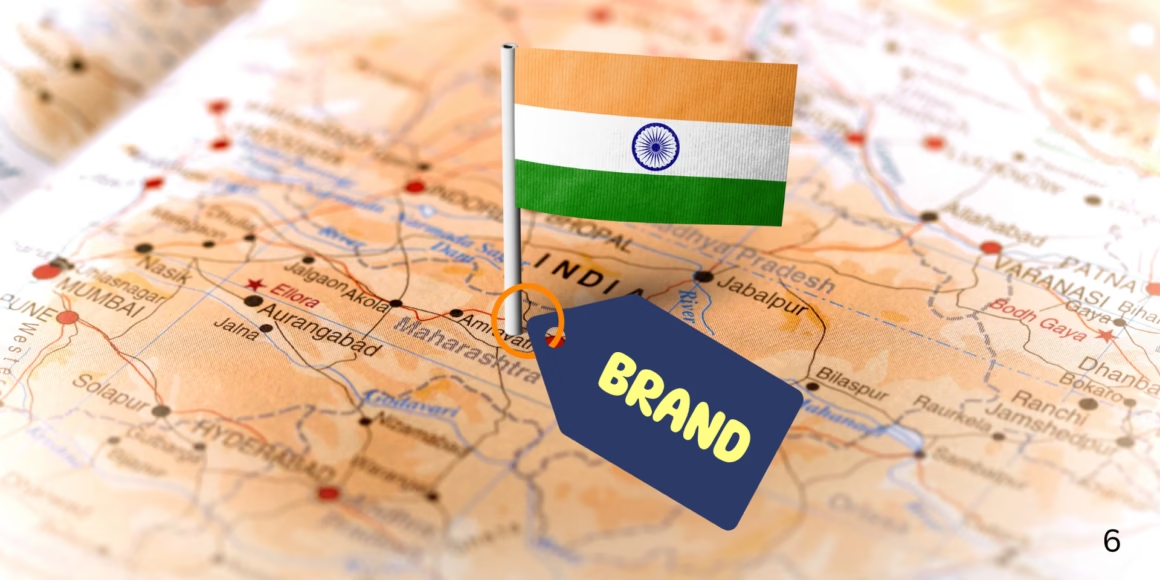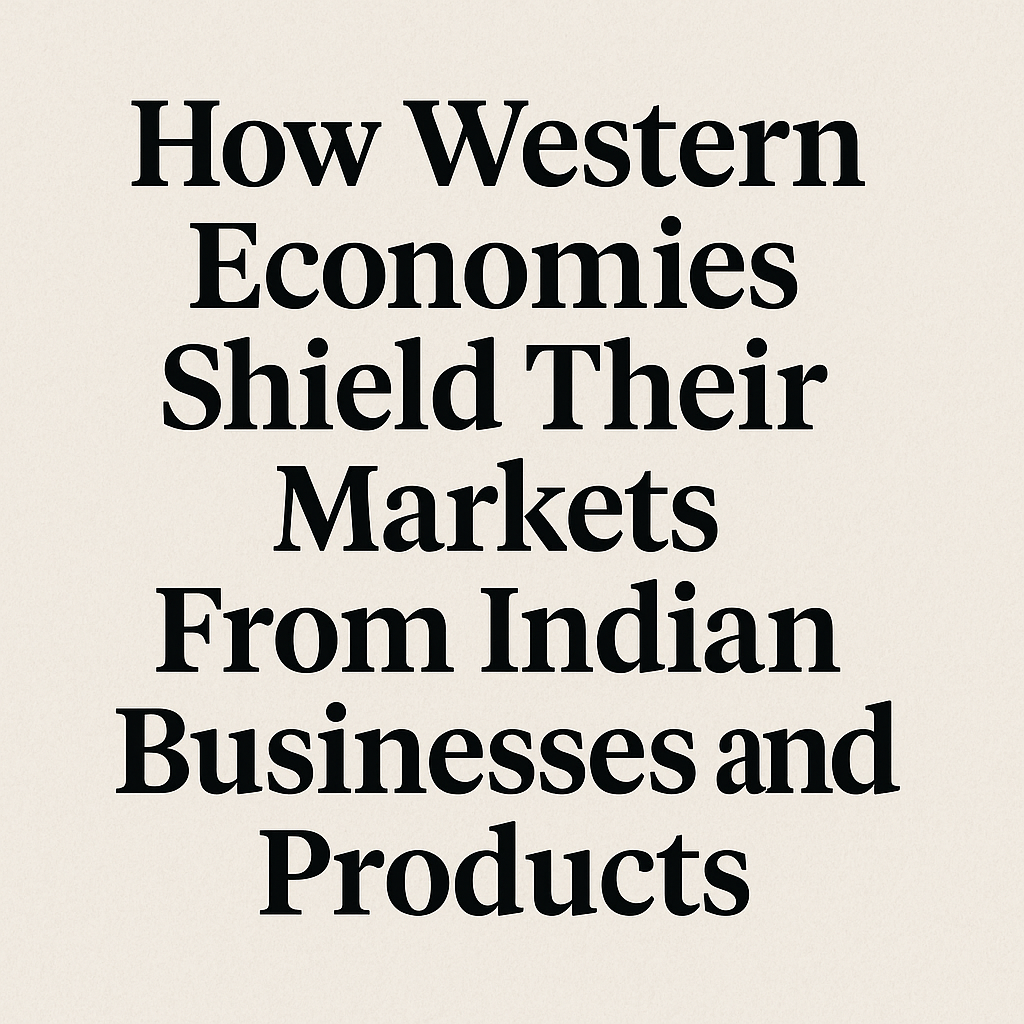The Paradox: A Global Economy, But Local Brands Stagnant
India is the world’s fifth-largest economy, one of the fastest-growing consumer markets, and a global tech outsourcing powerhouse. Yet, Indian consumer brands are rarely recognized on the global stage. From smartphones and shoes to apparel and automobiles, foreign brands not only dominate Indian urban markets but have also infiltrated semi-urban and rural segments.
This paradox — of a rising India still reliant on foreign names — raises critical questions:
- Why haven’t Indian brands gone global?
- Why do foreign brands enjoy a premium perception?
- Is there a lingering colonial mindset that anything Indian is substandard?
- And despite PM Narendra Modi’s Make in India and Atmanirbhar Bharat campaigns, why hasn’t this changed?
Let’s decode the reality behind the dominance of foreign brands and India’s global brand-building struggle.

⚡ Structural and Regulatory Bottlenecks
🏛️ Complicated Business Environment
India has historically had a complex regulatory environment. Until recent reforms, labor laws were archaic and fragmented across central and state governments. These created barriers for companies trying to scale manufacturing.
Even today, over 87% of organized Indian manufacturing units employ fewer than 10 people, limiting their ability to achieve economies of scale necessary for global competitiveness.
💸 Low R&D Investment
While China invested heavily in manufacturing R&D and design, most Indian companies prioritize operations over innovation. This short-term profitability focus hinders the creation of premium, differentiated products.
Brands like Samsung, Apple, and Uniqlo consistently invest billions in global R&D. In contrast, most Indian companies underinvest in product innovation, branding, and consumer research.
🚨 Strategic and Execution Failures
🌐 Domestic Market Obsession
India’s large domestic market has become both an advantage and a trap. Most Indian companies focus on local expansion rather than global growth. As a result, their products, packaging, and positioning remain India-centric and rarely resonate with global sensibilities.
Take Tata Nano for example. Marketed as the world’s cheapest car, it failed both domestically and abroad because affordability did not equate to desirability. Consumers saw it as a compromise, not an aspiration.
🚫 Weak Branding Culture
India lacks a strong branding tradition. Global branding requires vision, storytelling, emotional connect, and long-term investment. Indian brands often rely on price wars, local festivals, or celebrity endorsements rather than building enduring brand value.
Compare that with how Nike sells a lifestyle, Apple sells an ecosystem, or Toyota sells reliability. These narratives are missing in most Indian campaigns.
🌐 Why Foreign Brands Thrive in India
🏠 Glocalization Strategy
Global brands have learned to think locally. McDonald’s India doesn’t sell beef. Colgate uses ayurvedic imagery. Samsung rolls out India-specific phones with regional language support. This localization helps global brands connect authentically with Indian consumers.
⭐ Prestige and Aspiration
In many Indian households, using foreign brands is associated with success and status. An iPhone, Nike shoes, or a BMW are not just products—they’re aspirations.
Foreign branding strategies tap into this aspirational psyche effectively. They offer better design, consistent quality, and global prestige. Indian consumers often equate global with premium—a perception that local brands struggle to shake off.
📝 Policy Enablement
India’s liberalization policies have favored FDI. Single-brand retail is open to 100% foreign ownership, allowing foreign players to invest heavily, scale quickly, and shape narratives across multiple touchpoints. This regulatory openness has been more beneficial to foreign brands than Indian startups.
📜 Is It About Colonial Hangover?
❌ Oversimplification
Blaming India’s underwhelming global branding on a so-called “colonial mindset” is both unfair and inaccurate. While colonial history has affected perceptions of local products, today’s brand struggles are more due to infrastructure gaps, underinvestment, and strategic missteps than inherited inferiority complexes.
🤔 Subconscious Consumer Psychology
However, there is an element of aspirational bias. For generations, imported goods were considered superior – this legacy of perception lingers. In a liberalized economy, branding matters more than nationalism. Unless Indian brands match the quality, experience, and emotional storytelling of global peers, consumer preference will remain skewed.
🌟 Nationalistic Campaigns: Intent vs. Impact
🌿 Make in India & Atmanirbhar Bharat
Under Prime Minister Narendra Modi, campaigns like Make in India, Digital India, and Atmanirbhar Bharat aimed to instill self-reliance and build local capacity. These initiatives led to increased manufacturing investment and startup growth.
However, results have been mixed:
- Manufacturing share of GDP declined from 16.7% in 2013-14 to 15.9% in 2023-24.
- Ease of Doing Business improved on paper, but ground realities like red tape and policy uncertainty remain.
- Nationalism has inspired product boycotts (e.g., Chinese apps), but these were temporary and lacked ecosystem follow-through.
👨🎓 Youth and Global Exposure
India’s youth are globally connected via Instagram, YouTube, Netflix, and travel. Their choices are influenced more by influencers, trends, and aesthetics than patriotic campaigns.
While nationalistic appeals may work in political messaging, they are rarely enough to counter sleek, emotion-rich global advertising that appeals to individuality, lifestyle, and aspiration.
🌎 Global Success Stories From India (The Exceptions)
Not all Indian brands have failed globally. Some success stories include:
- Tata Group: Owns Jaguar-Land Rover, Tetley Tea, and recently launched Tata Motors EVs abroad.
- Mahindra: Operates in 100+ countries with SUVs and tractors.
- Bajaj: Two-wheeler exports in Latin America, Africa, and Southeast Asia.
- Infosys, TCS, Wipro: While not consumer brands, they are globally trusted tech services giants.
- Royal Enfield: Has cult followings in markets like the UK and Thailand.
These examples show that global impact is possible—but it demands patience, quality, and storytelling.
📊 Summary Table
| Issue | Cause(s) |
|---|---|
| Few Global Indian Brands | Risk aversion, weak branding, domestic focus |
| Foreign Brand Dominance in India | Glocal strategy, prestige perception, better branding |
| Colonial Mindset Argument | Oversimplified; more about strategic gaps than mental subservience |
| Youth Not Following Nationalism | Global exposure, aspiration, lifestyle branding of foreign products |
| Policy Intent vs. Execution | Make in India noble, but hampered by poor ground execution |
📚 What Can Be Done: The Way Forward
- Think Global from Day One: Indian startups must aim beyond local markets. Global design, global quality, and universal storytelling are key.
- Invest in Branding: Branding isn’t an expense. It’s a long-term investment. Indian firms need to shift from celebrity-driven ads to value-driven narratives.
- Build Product Excellence: Even the best story can’t save a poor product. Focus on R&D, design, packaging, and performance.
- Government as Facilitator, Not Dictator: Instead of promoting nationalism as the driving force, policies should focus on reducing bureaucratic hurdles and improving ease of doing business.
- Cultural Confidence: Bollywood, yoga, Ayurveda, and Indian cuisine already have global appeal. Indian brands can leverage this soft power to build authentic, homegrown global brands.
✅ Final Thought: Beyond Blame, Toward Building
India doesn’t suffer from a lack of talent, ideas, or ambition. What it lacks is a robust ecosystem that rewards long-term brand building, enables risk-taking, and incentivizes innovation.
Foreign brands rule India not because Indians hate Indian products, but because these brands bring premium experiences, clarity of purpose, and deep market understanding.
Nationalism can inspire. But to build enduring Indian brands that conquer the world, we need more than emotion. We need execution, excellence, and a fearless vision for the future.
The journey from local to global is difficult—but with the right mindset, India can move from being the world’s back office to being its front-end, brand-first innovator.
FOR MORE such BLOGS – beyondthepunchlines.com

 Add to favorites
Add to favorites








